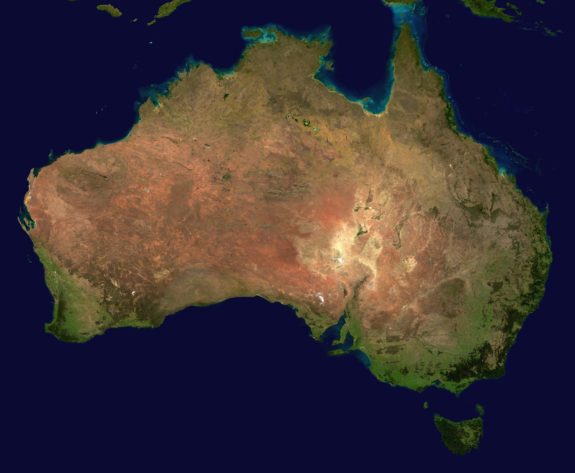The Australian government announced last week that it intends to invest around $12 million in a two-year program to help improve global satellite positioning in the country. The funding will go towards testing the use of satellite-based augmentation systems (SBAS) in the country. These systems are designed to provide instant, accurate positioning when combined with navigational satellite constellations.
We wrote previously about how Australia has historically had some minor accuracy issues with GPS, and even had to issue a correction late last year to account for inaccurate coordinates due to drifting. This project represents Australia’s first foray into the satellite positioning sector, and it has the potential to provide quite a few benefits to the country, and will be available for civilians as well as military and commercial organizations.
According to an article from GPS World, Australia’s GPS accuracy is currently at around five to ten meter (16-32 foot) accuracy. Once the SBAS tests are in place, it should increase the accuracy to a few centimeters. SBAS like the one Australia is testing are already used to increase accuracy in various countries around the world, including the United States, China, Russia, India, Japan, and in parts of Europe.
The addition of the SBAS system is expected to generate a more than $73 billion value to Australia and provide future safety, productivity, and environmental benefits. We’ve talked in the past about all the things GPS is commonly used for, and the additional efficiency of having a high-accuracy satellite navigation system is expected to be a boost to Australia’s economy.
“This technology has potential uses in a range of sectors, including agriculture and mining, which have always played an important role in our economy, and will also be at the heart of future growth in Northern Australia,” Senator Canavan said. “Access to this type of technology can help industry and Government make informed decisions about future investments.”
According to the Australian Government website, the SBAS test will be designed to:
- Test the performance of the technology directly in a number of industries.
- Test the current industry-specific requirements and how they interact with the technology.
- Test future industry-specific innovations that might be borne out by the technology.
From what I am understanding, the test will be a temporary measure and will not be fully operational until a few years after the test is complete, provided it is deemed successful.
For more information on the SBAS test and how it will work, check out the official government page on the subject.

